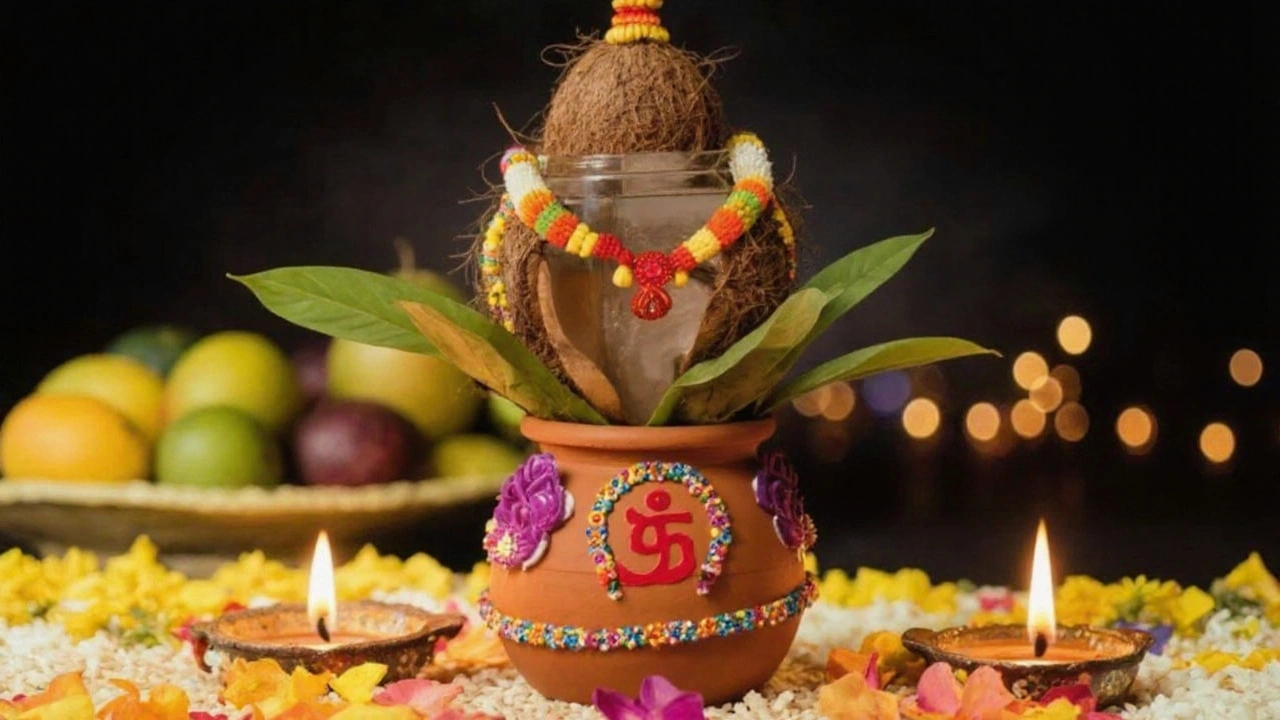Ghatasthapana: What It Is and How to Celebrate
Ever wondered why some families set up a jar of water and grains before Navratri? That’s Ghatasthapana. It’s the first day of the nine‑night festival and it kicks off the worship of the divine mother. In simple terms, the word means “establishing a pot.” The pot, or ghata, holds water, seeds, and a piece of soil – all symbols of life and fertility.
Most people think Ghatasthapana is only for the old or the deeply religious, but anyone can join in. The ritual doesn’t need a huge budget; a small earthen pot, some rice or barley, and a few candles are enough. Below you’ll find why the day matters and a step‑by‑step guide to do it right at home.
Why Ghatasthapana Matters
First, the pot represents the womb of the goddess Durga. When you fill it with water, you’re inviting her energy to flow into your home. The seeds you sow inside grow into sprouts over the nine days, showing how devotion can bring growth and prosperity.
Second, the ritual reminds us of the cycle of life. Water, soil, and seeds are the basic ingredients for any living thing. By honoring them, we respect nature and its gifts. Many families also link Ghatasthapana to the start of a new financial year, hoping for good business and health.
Finally, the ceremony creates a shared moment for the family. Everyone gathers, lights a lamp, and says a short prayer. That simple act builds a feeling of togetherness that lasts throughout Navratri.
Simple Steps to Perform the Ritual
1. Choose a clean earthen pot. If you don’t have one, a clay or metal bowl works too. Clean it well and place it in a quiet corner of your living room or puja room.
2. Fill the pot with water. Use fresh, cool water. Some people add a pinch of turmeric or rose water for fragrance, but plain water is fine.
3. Sprinkle a little soil. Just enough to cover the bottom. This soil will hold the seeds and connect the pot to the earth.
4. Plant the seeds. Take about a tablespoon of barley, wheat, or rice. Spread them evenly over the soil, then press them lightly. Cover them with a thin layer of soil again.
5. Set up the altar. Arrange a small picture or idol of Durga, a few candles, and some flowers. Light the candles and say a short prayer asking for health, happiness, and protection.
6. Maintain the pot. Every morning and evening, pour a little fresh water on the sprouts. This keeps them alive and symbolizes ongoing care for the goddess.
That’s it! The ritual only takes a few minutes, but it sets the tone for the entire Navratri. By the end of the nine days, your sprouts will have grown, and you’ll feel a sense of accomplishment.
Remember, Ghatasthapana isn’t about perfection. It’s about intention – the wish to bring positive energy into your home. If you’re new to it, start small and enjoy the process. Soon you’ll notice how this simple pot can turn a regular day into a meaningful celebration.

Chaitra Navratri 2025 Begins March 30 with Ghatasthapana Ritual
The nine‑day Chaitra Navratri 2025 kicks off on March 30 with the sacred Ghatasthapana ceremony. Each day honors a distinct form of Goddess Durga, culminating in Ram Navami on April 7. The festival marks the Hindu New Year in North India and retells the epic battle against demon Mahishasura. Traditional fasts, prayers, and Kanya Pujan bring communities together across the country.